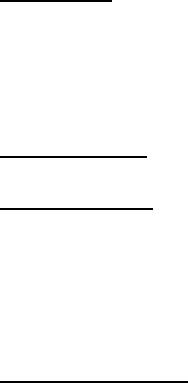
MIL-HDBK-1390
the reliability, maintainability, and FMECA efforts which follow in the TMRR phase. LORA reports
conducted on similar systems/equipment are analyzed in the MSA phase as well.
b.
The first TMRR Phase LORA report is due after completion of the reliability allocation tasks defined in
the Evaluation of Alternatives and Tradeoff Analysis (SAE TA-STD-0017, Activity 11), which includes
the FMECA (SAE TA-STD-0017, Activity 9.5), and prior to performing the Task Analysis (SAE TA-
STD-0017, Activity 12).
c.
The second TMRR Phase LORA report is due after completion of the prototype's Operational Test I (OT
I), but before the Preliminary Design Review (PDR) and contract award. This LORA report is used in the
proposal evaluation and selection process to review and evaluate maintenance and support alternatives,
including cost considerations that have been suggested in bidding on the contract.
d.
The first Engineering and Manufacturing Development (EMD) Phase LORA report is prepared after an
update of the failure analyses is performed and prior to the Critical Design Review.
e.
The second EMD Phase LORA report is prepared after OT II, but before the preparation of the initial
Provisioning Parts List (PPL) and before the formal provisioning review. This is an update to the first
EMD Phase LORA report and is used to review and evaluate the updated maintenance and support
alternatives, including cost considerations for the EMD phase.
f.
The final Product and Deployment (P&D) Phase LORA report is prepared after the final failure analysis is
updated and before the performing activity submits a final PPL. This P&D Phase LORA report is an
update/expansion of the last LORA report submitted during the EMD phase.
g.
During the O&S phase, it may be necessary to conduct a LORA in order to update or adjust the support
structure of a system because of significant changes that occur (i.e., materiel changes, ECPs, or changes in
utilization rates, costs, maintenance capabilities, or policy). The O&S Phase LORA should be
documented in a LORA report and incorporated into the final LORA report submitted in the P&D phase.
This LORA report is used to support the efforts of a fielded system review, post provisioning review, or
sample data collection program.
5.5.2.5 Life cycle patterns. System acquisition programs do not always track the typical life cycle pattern
discussed in the above paragraphs. An example of this is an accelerated acquisition program where the EMD phase
may either be bypassed or extremely reduced. Thus, the complexity of LORA conducted and the number of LORA
reports required depends on various factors such as the type of acquisition program and purpose of the analysis
being conducted. At a minimum, the LORA should analyze the support alternatives of the weapon system to
determine level of repair/discard alternatives and assist in assigning maintenance and supply support costs to the
system's maintenance concept. The LORA report should then be used in support of the maintenance planning and
provisioning process.
Use and implementation. The following paragraphs outline the activities needed to ensure the proper
5.6
application of the LORA results and recommendations.
5.6.1 Using results (Activity 6). This activity provides a methodology for using the documented LORA
results from Activity 5. From the results of the analysis, an optimal maintenance concept will be derived. The
results should also be coordinated with systems engineering and other applicable analyses. In early phases of the
life cycle, the LORA results can be used to influence design and assist in development of the maintenance concept.
The LORA results are also used to develop PSA related products specified in the contract, validate resource
requirements, and assist in generating the maintenance plan, MAC, as well as the SMR codes. The results should
also be used to make recommendations for further analyses. When conducting a LORA on fielded
systems/equipment, the LORA results should be used to assess the current maintenance concept and to recommend
how it may be improved.
5.6.1.1 Design influence (Activity 6.1). The LORA results can uncover maintenance and supportability
problems and provide input to the system/equipment designer to resolve the issues. These results not only drive the
maintenance support for each repairable item being analyzed, but they also establish by whom and where each item
will be repaired. Thus, it is useful to track the design change recommendations made as a result of the LORA
evaluations and monitor their progress as the system design evolves throughout the life cycle. Evaluating the impact
of not implementing a recommended design change is another helpful tool when providing input to the system
17
For Parts Inquires call Parts Hangar, Inc (727) 493-0744
© Copyright 2015 Integrated Publishing, Inc.
A Service Disabled Veteran Owned Small Business